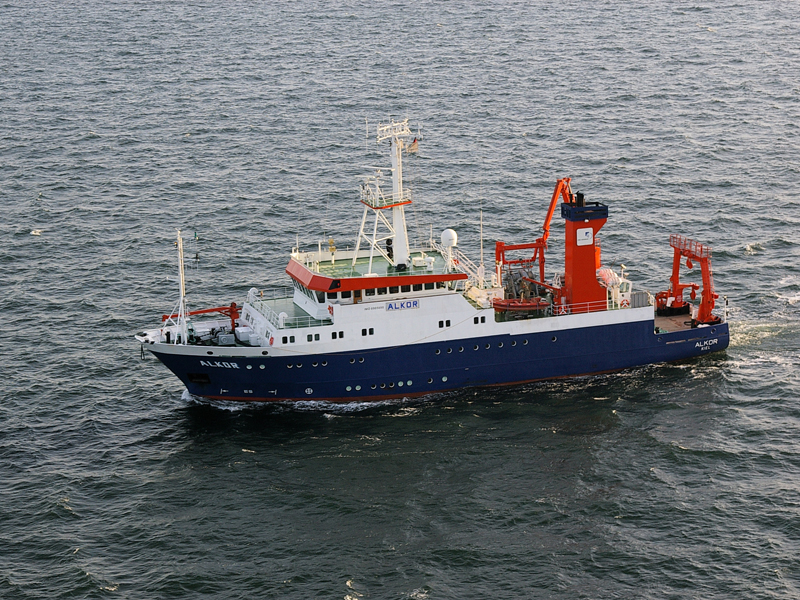ALKOR AL512
- Area:
- North Sea
- Time:
-
15.07.2018 - 26.07.2018
- Institution:
- GEOMAR
- Chief scientist:
- Jens Karstens
According to the Intergovernmental Panel on Climate Change (IPCC), Carbon Capture and storage (CCS) is a key technology to mitigate anthropogenic CO2 emissions in order to limit global warming to 2°C. The most promising CO2 storage formations for the large-scale implementation of CCS in Europe are depleted oil and gas reservoirs and saline aquifers in the North Sea. However, these formations often have a complex and dynamic fluid flow history. Seismic hydrocarbon exploration in the North Sea has revealed a multitude of vertical oriented, seismic amplitude anomalies known as seismic pipes and chimneys, which are interpreted as strata-crosscutting fluid migration pathways. The geological nature and hydraulic properties of pipe and chimney structures are not well constrained, but it is very likely significantly influences the caprock integrity and the long-term storage efficiency of affected CO2 storage formations. During the requested ship time, we will collect a comprehensive set of seismic and hydroacoustic data to compare the seismic and hydroacoustic characteristics of natural fluid flow pathways with the Figge Maar blowout structure in the German North Sea. The proposed experiments represent the first-ever geophysical investigation of the Figge Maar which was generated while drilling an exploration well in 1963 and will allow to determine if the structure is still actively leaking gas. Furthermore, they will help to evaluate the robustness of focused fluid conduit interpretations in general and to reconstruct the dynamic seafloor topography evolution of a fluid expulsion structure. The results will have profound implications for understanding fluid migration in sedimentary basins in general and in particular for the assessment of CO2 storage sites.



